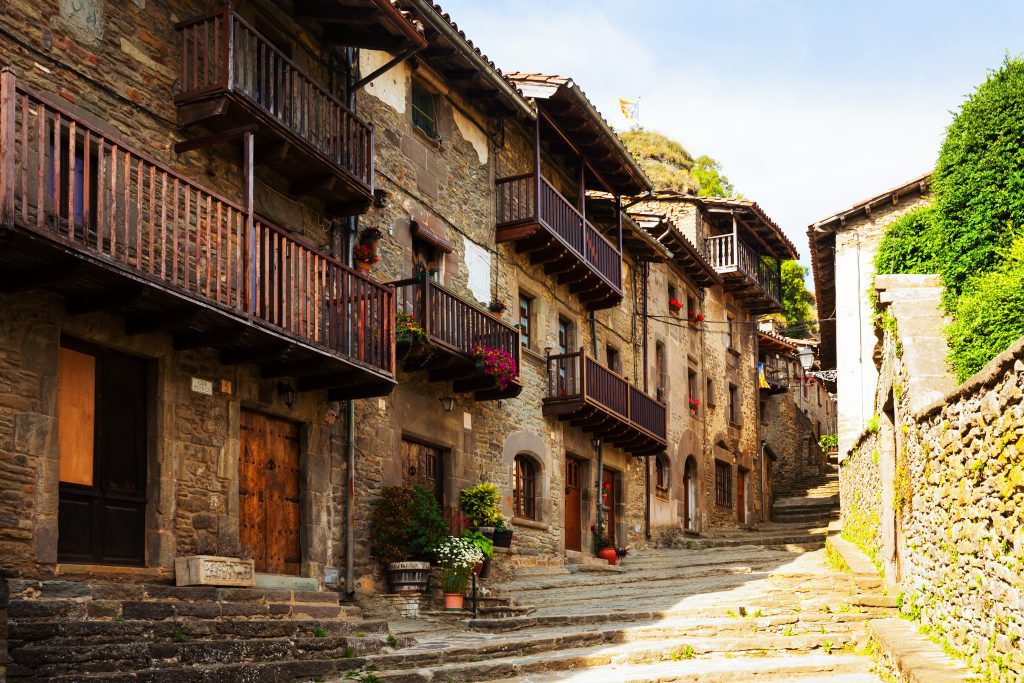Today, tourism is no longer just a recreational activity—it has become a driver of economic, social, and territorial transformation. In a context of increasing urbanization, rural depopulation, and regional disparities, many territories—especially small and medium-sized ones—are finding in tourism a powerful tool to reactivate their economies, recover their identity, and generate new opportunities.
But for tourism to truly serve as a local development strategy, it’s not enough to attract visitors. It requires a comprehensive vision based on sustainability, community participation, and a balanced relationship between tourists and residents. This new approach aims to make tourism not just a source of income, but also a catalyst for social cohesion, rootedness, and improved quality of life.
A Diversified Economy That Stays in the Territory
One of tourism’s most immediate effects is its capacity to generate employment and income. Unlike other economic activities that tend to concentrate profits, tourism activates a network of local sectors: accommodation, food services, transport, retail, cultural activities, tour guides, and artisanal producers. It’s an economy that multiplies and remains within the community.
For instance, in the small town of Alquézar (Huesca), with fewer than 400 residents, tourism has created a thriving ecosystem around hiking, canyoning, and local cuisine. Many locals have converted family homes into rural accommodations or opened small restaurants and local product shops. This economic diversification has not only helped curb depopulation but has also revived traditional trades and brought vitality back to the community.
Tourism also encourages local entrepreneurship. Often, all it takes is deep knowledge of the area and a creative idea to launch a successful initiative. From thematic routes to food and wine experiences, many tourism projects are born from within the community and contribute to a more resilient local economy.
Reclaiming Identity, Not Just Showcasing It
Beyond the economic impact, tourism can act as a catalyst for preserving both tangible and intangible heritage. When a region builds its tourism narrative around its culture, history, customs, and natural surroundings, it also reaffirms its identity and strengthens community pride.
A great example is Ribeira Sacra, in Galicia. With a centuries-old wine-making tradition, the region has positioned itself as a top cultural and scenic destination. Through wine tourism, visits to monasteries, and river cruises through the Sil canyons, Ribeira Sacra attracts travelers who seek authenticity. Most importantly, tourism here has led to the revival of abandoned vineyards, the revitalization of local festivals, and a more professionalized tourism sector.
This process benefits both visitors, who enjoy a unique and meaningful experience, and the local community, which reclaims its narrative and pride. In this sense, tourism becomes a form of cultural resistance against global homogenization.
Improving the Place for Its Residents
When properly planned, tourism can lead to infrastructure and public service improvements that benefit both visitors and locals. Better roads, clearer signage, more efficient public transport, stronger digital connectivity, greener public spaces, and improved healthcare services all translate into higher quality of life.
Destinations like Benasque (Huesca) illustrate this well. The growth of nature tourism has driven investments in pedestrian areas, digital tools for managing visitor flows, and local services. These improvements not only enhance the tourist experience, but also significantly benefit year-round residents.
This idea of “social return tourism” is essential. When communities see tangible benefits from tourism, acceptance increases, and a more harmonious relationship emerges between hosts and guests.

Sustainable Development—Or No Development at All
Tourism can be a double-edged sword. Without thoughtful management, it can lead to overcrowding, environmental degradation, real estate speculation, and loss of local identity. That’s why sustainability must be at the core of every local tourism strategy—not an afterthought.
Aras de los Olmos (Valencia) is a clear example. This small town has embraced astrotourism, leveraging its pristine skies and strong environmental commitment. Through a strategy based on environmental education, agroecology, and conservation, it has attracted low-impact, science-oriented visitors who respect and appreciate the natural surroundings.
This model proves that growth doesn’t have to come at the cost of the environment. Sustainable tourism can be profitable, job-creating, and innovation-driven. It also helps position the region as a best-practice benchmark, appealing to more conscious traveler segments.
Participatory Governance—Tourism as a Collective Project
No tourism development strategy can succeed without local involvement. Including residents, businesses, and local organizations in tourism planning ensures that decisions are aligned with real needs and fosters a strong sense of ownership.
In many parts of the Catalan Pyrenees, local tourism councils have been established to bring together public and private stakeholders in shaping the future of tourism. This participatory governance helps identify challenges, propose solutions, and coordinate joint efforts. It also prevents tourism from being perceived as an external imposition.
When tourism is developed as a shared project, social ties are strengthened, and co-responsibility increases. Everyone benefits: public administrators, business owners, and above all, the local community.
Innovation and Digitalization Serving the Territory
In today’s hyperconnected world, technology plays a key role in local tourism development—not only for promotion but also for management, monitoring, and decision-making. Digital tools allow destinations to reach specific audiences, spotlight unique offerings, and tailor experiences to evolving demands.
Companies like Smartvel are helping small and mid-sized destinations showcase their full potential through intelligent platforms. These solutions integrate local events, personalized recommendations, and interactive maps to enhance visitor experiences and provide visibility for small businesses that might otherwise go unnoticed.
Moreover, data analytics enables destination managers to understand tourist flows, measure impact, identify opportunities, and avoid issues like overcrowding or extreme seasonality. In short, technology becomes a tool for more balanced, efficient, and development-focused tourism.

Smartvel’s long tail content technology, developed with support from the Spanish Government and the European Union, is helping small and mid-sized destinations thrive through dynamic, real-time content. By showcasing both popular landmarks and hidden gems, this innovation ensures that every territory can tell its story in a personalized and impactful way.



Conclusion – Tourism That Transforms
When tourism is seen as a local development strategy, it ceases to be an end in itself and becomes a powerful means. A means to create quality jobs, recover traditions, improve public services, empower communities, and attract talent. But also, a means to reconnect people with their places and build a more just and sustainable future.
It’s not about filling destinations—it’s about filling them with meaning. Building authentic, inclusive, and respectful tourism proposals. Looking inward before projecting outward. Because only when tourism improves the lives of residents can it truly be considered a sustainable development strategy.
As the saying goes, tourism doesn’t just move people. It can move entire communities toward a more prosperous future.






